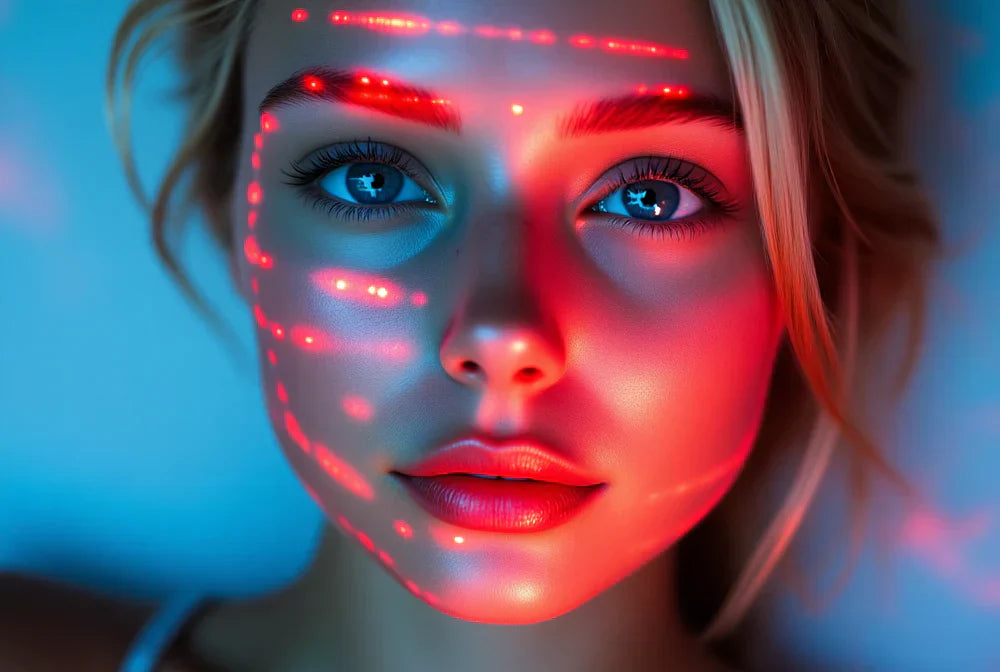Red light therapy, a cutting-edge approach in the realm of holistic health, is gaining traction for its remarkable ability to promote healing and rejuvenation. But how deep does red light therapy penetrate, and what implications does this have for its effectiveness? This article seeks to unravel the mysteries of RLT's penetration depth, offering insights that are crucial for athletes seeking recovery, skincare enthusiasts aiming for youthful radiance, and healthcare practitioners looking to enhance their treatment offerings. Set out on this enlightening path to understand how red light therapy can enhance and transform your wellness routine.
Why Is The Depth Of Penetration Important In RLT?
The depth of penetration in red light therapy (RLT), which involves specific wavelengths of light, is a critical factor that determines its efficacy across various applications, from skincare to pain management. This depth dictates how effectively the light can reach and influence different layers of tissue, impacting cellular processes such as energy production, inflammation reduction, and collagen synthesis. For skincare enthusiasts, deeper penetration means more significant improvements in skin rejuvenation and anti-aging effects. Athletes and chronic pain sufferers benefit from RLT's ability to reach muscles and joints, promoting faster recovery and pain relief. Understanding the penetration depth allows healthcare practitioners and home users to tailor treatments to specific needs, ensuring that the therapeutic benefits of RLT are maximized for each individual.
What Factors Affect The Depth Of RLT Penetration?
Wavelength of Light
The wavelength of the light used in red light therapy is a primary factor influencing penetration depth. Typically, wavelengths in the range of 600 to 700 nanometers are used for superficial skin treatments, while those in the range of 800 to 900 nanometers penetrate deeper into tissues. Longer wavelengths can reach further into the body, affecting muscles and joints, which is why they are often preferred for pain relief and muscle recovery applications. Understanding the appropriate wavelength for specific therapeutic goals is crucial for maximizing the benefits of RLT.
Skin Type and Condition
Individual skin types and conditions can also affect how deeply red light penetrates. For instance, thicker or more pigmented skin may exhibit increased absorption of light, reducing penetration depth. Conversely, lighter or thinner skin may allow for deeper penetration. Additionally, the presence of certain skin conditions, such as inflammation or scarring, can alter how light interacts with the skin, potentially affecting the therapy's effectiveness. Tailoring RLT to accommodate these variations ensures more precise and effective treatments.
Device Power and Intensity
The power, intensity, and wavelengths of the RLT device play a significant role in determining penetration depth. Higher-powered devices can deliver more energy, potentially allowing for deeper penetration into tissues. However, it's essential to balance power with safety to avoid overheating or damaging the skin. Devices with adjustable intensity settings offer flexibility, enabling users to customize treatments based on their specific needs and desired outcomes.
Treatment Duration and Frequency
The duration and frequency of RLT sessions can influence how effectively the light penetrates and impacts tissues. Longer or more frequent sessions may enhance penetration and therapeutic effects, but they must be carefully managed to prevent overexposure. Consistent, appropriately timed treatments can optimize the cumulative benefits of RLT, promoting better results over time. Understanding the optimal treatment schedule is key to achieving desired health and wellness outcomes.
How Deep Does Red Light Therapy Penetrate?
Red light therapy (RLT) typically penetrates the skin to a depth of approximately 5 to 10 millimeters, although this can vary based on the wavelengths used and the specific device. This depth is sufficient to reach the dermis layer of the skin, where it can stimulate collagen production and improve skin texture and elasticity, making it a popular choice for anti-aging and skin rejuvenation treatments. Moreover, RLT can penetrate deeper into soft tissues, affecting muscles and joints, which is beneficial for athletes seeking muscle recovery and individuals managing chronic pain conditions. The ability of red light to penetrate these layers allows it to influence cellular processes, enhance mitochondrial function, and promote healing and regeneration, making it a versatile tool in both medical and cosmetic applications. Understanding the nuances of RLT penetration helps users and practitioners optimize its use for targeted therapeutic outcomes.
Does Red Light Therapy Reach The Dermis?
Yes, red light therapy (RLT) does reach the dermis, which is the second layer of the skin. The dermis is rich in collagen, elastin, and other vital components that contribute to skin elasticity and firmness. By penetrating to this depth, typically around 5 to 10 millimeters, RLT can stimulate the production of collagen and enhance cellular repair processes. This capability makes it particularly effective for skin rejuvenation, reducing fine lines, and improving overall skin texture. The ability to reach the dermis also allows RLT to address issues such as inflammation and minor skin damage, promoting a healthier and more youthful appearance. This depth of penetration is one of the reasons RLT is a popular choice for both cosmetic and therapeutic skin treatments.
What’s The Difference In Penetration Between Red and Near-Infrared Light?
The primary difference in penetration between red light and near-infrared (NIR) light lies in their respective wavelengths and how deeply they can reach into the body's tissues. Red light, with wavelengths typically ranging from 600 to 700 nanometers, penetrates the skin to a depth of about 5 to 10 millimeters, making it ideal for treating surface-level skin issues such as wrinkles, fine lines, and acne. In contrast, near-infrared light, which operates in the 800 to 900 nanometer range, penetrates much deeper, reaching several centimeters into the body. This deeper penetration allows NIR light to effectively target muscles, joints, and even bones, making it highly beneficial for pain relief, muscle recovery, and reducing inflammation in deeper tissues. The choice between red and NIR light depends on the specific therapeutic goals, with red light being more suitable for skin-related treatments and NIR light being preferred for deeper tissue applications.
How To Use Red Light Therapy For Optimal Penetration
- Select the Right Wavelength: Choose a device that offers the appropriate wavelength for your specific needs. For skin treatments, opt for red light in the 600 to 700 nanometer range, as these wavelengths are effective for such uses, while deeper tissue issues like muscle recovery may benefit from near-infrared light in the 800 to 900 nanometer range.
- Adjust Device Power and Intensity: Utilize a device with adjustable power settings to ensure optimal penetration without causing discomfort or skin damage. Higher intensity can enhance penetration, but it should be balanced with safety considerations.
- Maintain Proper Distance: Position the device at the recommended distance from the treatment area, usually a few inches away, to ensure effective light delivery. This helps maximize penetration while maintaining safety and comfort.
- Optimize Treatment Duration and Frequency: Follow a consistent treatment schedule, typically involving sessions of 10 to 20 minutes, several times a week. Regular use enhances cumulative benefits and ensures deeper penetration over time.
- Prepare the Skin: Cleanse the skin before treatment to remove any barriers, such as makeup or lotions, that could impede light penetration. This preparation ensures that the light reaches the target tissues effectively.
Conclusion
In conclusion, understanding the depth of penetration in red light therapy is pivotal for maximizing its therapeutic benefits across a wide range of applications. Whether you're a skincare enthusiast seeking rejuvenation, an athlete aiming for enhanced recovery, or a healthcare professional integrating RLT into your practice, recognizing how different wavelengths and factors affect penetration can significantly influence outcomes. By selecting the right wavelength, adjusting device settings, and maintaining a consistent treatment regimen, users can harness the full potential of RLT to promote healing, reduce pain, and improve skin health. As we continue to explore and innovate within this promising field, red light therapy stands as a beacon of non-invasive, effective treatment options, empowering individuals to achieve their health and wellness goals with confidence and clarity.
Final Thoughts
Curious about how red light therapy can transform your wellness routine? At EMR-TEK, we offer innovative solutions that fit effortlessly into your lifestyle. Whether you need a portable device for convenience on the go or a comprehensive system for home or professional use, we have the perfect option for you. Our blue light glasses are also expertly crafted to alleviate eye strain, making them an essential part of your wellness routine. Discover our collection of red light therapy products and take the first step toward healthier, more youthful skin today.
Sources
- https://en.wikipedia.org/wiki/Dermis
- https://celliant.com/pulse/all/infrared-light/
- https://www.atlantaliposuction.com/blog/the-morpheus8-advantage/
Disclaimer*: EMR-TEK’s red infrared light therapy devices, blue light blocking glasses, and other products are intended solely for personal wellness and fitness use. They are not designed to diagnose, treat, cure, or prevent any disease and should not be considered medical devices. We do not make any therapeutic claims. Our products align with the FDA’s “General Wellness: Policy on Low Risk Devices” guidelines and do not require FDA clearance. Please note, EMR-TEK’s products are for personal use only and not for commercial application.*




Share:
When To Wear Blue Light Glasses: Best Times For Blue Light Glasses
Sunspots On Face: Causes, Treatments, and Prevention